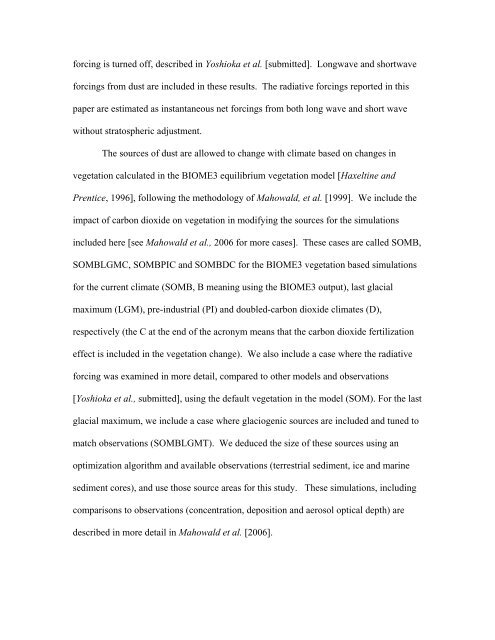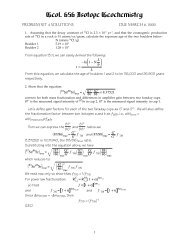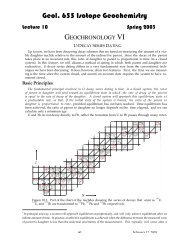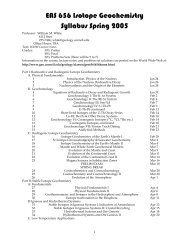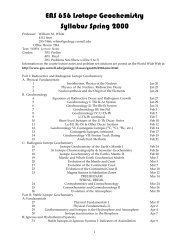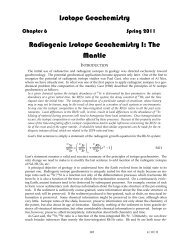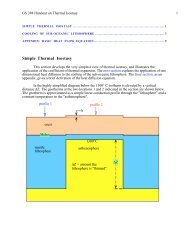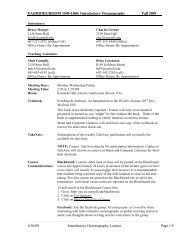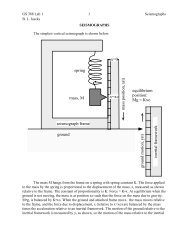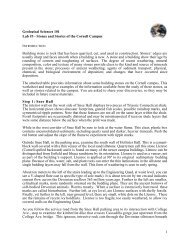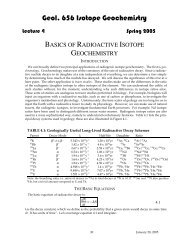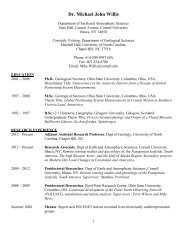Mahowald et al 2006
Mahowald et al 2006
Mahowald et al 2006
You also want an ePaper? Increase the reach of your titles
YUMPU automatically turns print PDFs into web optimized ePapers that Google loves.
forcing is turned off, described in Yoshioka <strong>et</strong> <strong>al</strong>. [submitted]. Longwave and shortwaveforcings from dust are included in these results. The radiative forcings reported in thispaper are estimated as instantaneous n<strong>et</strong> forcings from both long wave and short wavewithout stratospheric adjustment.The sources of dust are <strong>al</strong>lowed to change with climate based on changes inveg<strong>et</strong>ation c<strong>al</strong>culated in the BIOME3 equilibrium veg<strong>et</strong>ation model [Haxeltine andPrentice, 1996], following the m<strong>et</strong>hodology of <strong>Mahow<strong>al</strong>d</strong>, <strong>et</strong> <strong>al</strong>. [1999]. We include theimpact of carbon dioxide on veg<strong>et</strong>ation in modifying the sources for the simulationsincluded here [see <strong>Mahow<strong>al</strong>d</strong> <strong>et</strong> <strong>al</strong>., <strong>2006</strong> for more cases]. These cases are c<strong>al</strong>led SOMB,SOMBLGMC, SOMBPIC and SOMBDC for the BIOME3 veg<strong>et</strong>ation based simulationsfor the current climate (SOMB, B meaning using the BIOME3 output), last glaci<strong>al</strong>maximum (LGM), pre-industri<strong>al</strong> (PI) and doubled-carbon dioxide climates (D),respectively (the C at the end of the acronym means that the carbon dioxide fertilizationeffect is included in the veg<strong>et</strong>ation change). We <strong>al</strong>so include a case where the radiativeforcing was examined in more d<strong>et</strong>ail, compared to other models and observations[Yoshioka <strong>et</strong> <strong>al</strong>., submitted], using the default veg<strong>et</strong>ation in the model (SOM). For the lastglaci<strong>al</strong> maximum, we include a case where glaciogenic sources are included and tuned tomatch observations (SOMBLGMT). We deduced the size of these sources using anoptimization <strong>al</strong>gorithm and available observations (terrestri<strong>al</strong> sediment, ice and marinesediment cores), and use those source areas for this study. These simulations, includingcomparisons to observations (concentration, deposition and aerosol optic<strong>al</strong> depth) aredescribed in more d<strong>et</strong>ail in <strong>Mahow<strong>al</strong>d</strong> <strong>et</strong> <strong>al</strong>. [<strong>2006</strong>].


